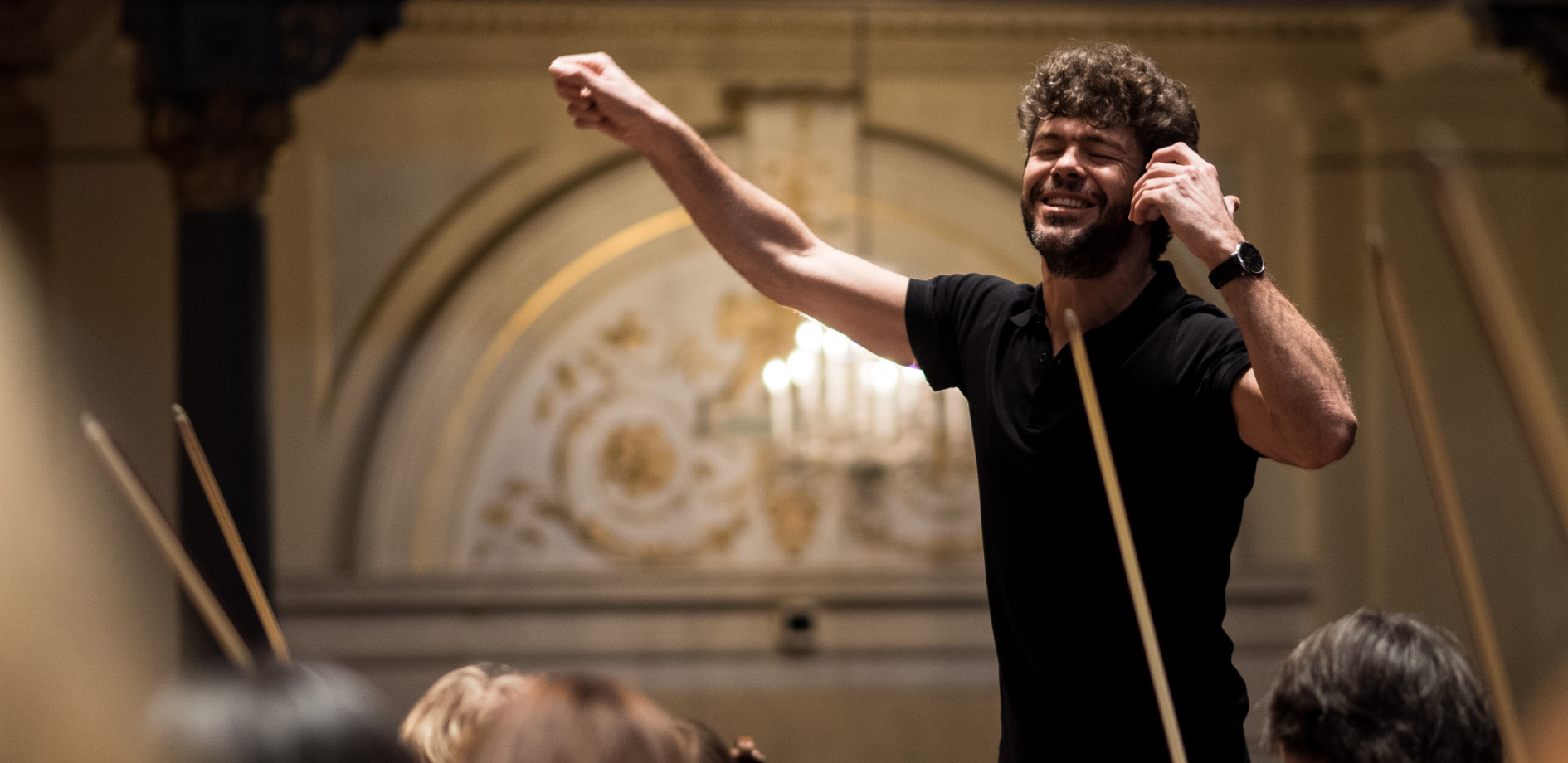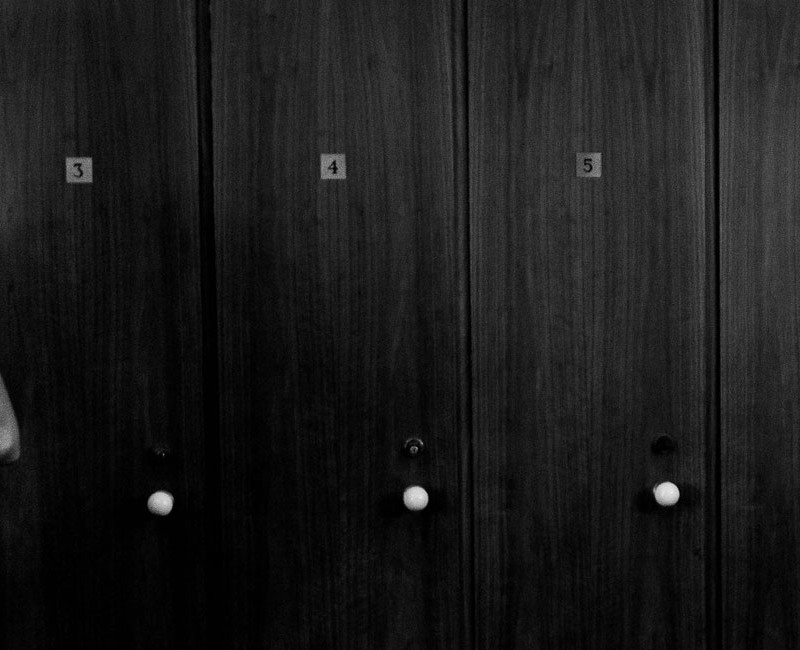
Highlights from recent performances in the US
Oct 31, 2016
San Francisco Symphony
“The rest of the program was just the latest reminder of what a vivid and resourceful conductor Heras-Casado is. (He currently leads the Orchestra of St. Luke’s in New York, but the first major American orchestra to snap him up as music director will have hit the jackpot.)
He began by leading the Symphony in a subtle but zesty account of Mozart’s Symphony No. 29 in A, one that emphasized the music’s easy symmetries while still giving it plenty of rhythmic intensity.
Even more impressive was the performance of Dvorák’s Symphony No. 7 that occupied the concert’s second half in a virtuoso display of orchestral color and architectural solidity. Throughout the early stages of the symphony, Heras-Casado kept ramping up the forcefulness of his rhetoric — slowly but ineluctably — until the entire stage seemed to quiver with possibility, and the finale brought everything to a glorious conclusion.
The orchestra members seemed to respond with enthusiasm to Heras-Casado’s ministrations. The brass sounded as voluble and polished as I’ve heard them, and the contributions of Edward Stephan, the Symphony’s excellent new timpanist, were a constant source of inspiration. This was exactly the kind of performance that makes a conductor sound like a wizard.”
Joshua Kosman – San Francisco Chronicle
“If there’s one sure thing on the Bay Area classical music scene these days, it has to be Pablo Heras-Casado’s annual visits to Davies Symphony Hall.
The Spanish conductor, who made his San Francisco Symphony debut in 2010, returned to Davies Hall on Wednesday night to lead the Symphony players in stylish, bravura performances of Schumann’s Cello Concerto in A minor, Dvorak’s Symphony No. 7 in D minor, and Mozart’s Symphony No. 29 in A major … Heras-Casado’s assured, electrifying leadership made each work resonate with fresh energy …
Weilerstein and Heras-Casado, whose recent recording of Shostakovich cello concertos has earned glowing reviews, were great partners in this score. Cellist and conductor were clearly in accord from the opening measures of the first movement, ushered in on woodwinds and pizzicato strings. Heras-Casado observed Schumann’s tempo marking – “Nicht zu schnell” (Not too fast) – but Weilerstein’s richly colored sound and unerring interpretive skills conferred an apt sense of turbulence on the proceedings. With Heras-Casado applying painterly dabs of orchestral color, the billowing strings, piquant woodwinds and shapely horns all made expressive contributions …
The finale bristled with energy; with Weilerstein sounding assured and vivacious in Schumann’s challenging time shifts, Heras-Casado brought the performance to a dazzling close.
The rest of the program was just as impressive. After intermission, the Dvorak symphony received a dynamic reading. Heras-Casado, named Musical America’s 2014 Conductor of the Year, led the ensemble with a combination of precision and ebullience that made everything in the score sound spontaneous. Each section made heroic contributions; the woodwinds, voicing with sylvan beauty in the Adagio, were the standouts.”
Georgia Rowe – The Mercury News
“Schumann’s Cello Concerto in A minor is like a thoughtful discourse which emerged from a period in his life after he moved with his family from Dresden to Dusseldorf. There was a lot of unhappiness around this time with domestic disturbances and unease from the move and one can hear these reflected in the music. From the outset, the San Francisco Symphony, led by Pablo Heras-Casado, set the tone – sombre and brooding …
The final offering was Dvořák’s Symphony no. 7 in D minor. Sometimes, after listening to the canon of classical music from Austro-German composers, one can quite easily predict where or when a phrase would end or where a melody would go. This makes it so refreshing to hear a Czech composer’s voice in the way that he injects Bohemian influences into his music. In his Seventh, it is as though Dvořák has a lot to say with ample material being developed in each of the movements. The SFS certainly did it justice. Brass textures and flute trills coloured the opening movement, as if painting a landscape, dramatic brooding giving way to pastoral joviality. In contrast, the second movement had an intimate feel, the woodwinds opening with a quiet melody against string pizzicatos. The scherzo’s catchy cross-rhythms instantly grabbed us, while the finale had moments where it could squarely be classified as head-banging, confirmed by the discreet nodding by concert-goers. The final D major close was solemn and weighty and appropriately greeted by the audience to conclude a memorable evening.”
Mayumi Wardrop – Bachtrack
“Heras-Casado opened the bill with a nicely articulated Mozart Symphony No. 29 that immediately captured the crowd with its seductive and familiar opening tune. The musicians of the SFS obviously know and respond well to the Spanish maestro by now. For audience members meeting the dynamic conductor for the first time, it proved a charming introduction.
The big news of the evening was the second half, devoted to Dvorak’s magnificent Symphony No. 7 in D minor. And we offer big, big thanks for bringing us the Seventh instead of the too-often-heard Ninth, From the New World. The ensemble playing was superb throughout, and the sexy young conductor proved yet again that he is far more than an agreeable visual presence … how refreshing it was to hear such sympathetic understanding in the core repertory, too.”
Philip Campbell – Bay Area Reporter
The New York Philharmonic
“The dynamic Spanish conductor Pablo Heras-Casado, also 38, led the program, which includes Bartok’s Dance Suite and Dvorak’s Seventh Symphony. These young (for classical music) musicians seemed to embolden each other during a fresh, energetic account of the Bruch, a repertory staple … Under Mr. Heras-Casado, the orchestra played with plush sound and, during stormy exchanges with the soloist, bracing intensity …
Mr. Heras-Casado began the program with a rustic account of Bartok’s 1923 Dance Suite. Its six movements are infused with engaging rhythms, scales and harmonies (but no specific tunes) that Bartok picked up from his studies of ethnic music in Eastern Europe and North Africa.
Mr. Heras-Casado, who is thriving as the principal conductor of the Orchestra of St. Luke’s, went all out in Dvorak’s Seventh Symphony, the composer’s most Brahmsian piece … the performance was certainly exciting.”
Anthony Tommasini – The New York Times
Los Angeles Philharmonic
“On Sunday afternoon, Pablo Heras-Casado, leading the Los Angeles Philharmonic at Walt Disney Concert Hall in a riveting performance, was that conductor. His program also included Ravel’s “Alborada del gracioso” and Piano Concerto in G, with Spanish pianist Javier Perianes subbing for an indisposed Pierre-Laurent Aimard.
Heras-Casado, who made his debut with the orchestra in 2009, has proved one of the most versatile conductors of his generation … Remarkably, considering Stravinsky composed “Firebird” in collaboration with choreographer Michel Fokine for Diaghilev’s Ballets Russes, Heras-Casado sustained the narrative through slow, quiet sections that otherwise would have had dancers to help carry them. Seamlessly navigating the work’s many transitions, the conductor’s conjuring of orchestral mood and color was so pictorially communicative, one could almost see Prince Ivan encountering the enchanting Firebird for the first time … Under Heras-Casado, the Phil’s impeccable ensemble delivered such a powerful account of the “Infernal Dance” that some members of the audience started to applaud.
Heras-Casado’s theatrical side emerged in his use of delightful antiphonal effects — a trumpet playing offstage led into glissandi on three harps. At another point, a brass quartet performed in the organ loft. And adding to the thrilling brass-driven Finale, the conductor placed a row of horns in the balcony. With such drama, who needed dancers?”
Rick Schultz – Los Angeles Times
“Heras-Casado began the matinee concert with a light but crisp performance of Ravel’s delightful 8-minute Alborada del gracioso. It was a perfect aperitif that wafted through the hall like the cool breeze outside. The long bassoon solo was played wistfully by LA Phil Principal Whitney Crockett.
The first half concluded with a performance of Ravel’s Piano Concerto in G. The soloist originally scheduled was the French pianist Pierre-Laurent Aimard, but he had to withdraw because of a family emergency. Stepping in at the last minute was the Spanish pianist Javier Perianes. The two Spanish compatriots delivered a scintillating performance of the Ravel …
The major work on the program was Stravinsky’s The Firebird … The performance by Heras-Casado and the LA Phil was a tour de force. Let’s face it, the LA Phil is a great orchestra on par with the other great orchestras of the world, so it almost doesn’t matter who conducts them. Having said that, Heras-Casado did a superb job of recreating the fantasy of The Firebird. It was a captivating performance that showcased the musical prowess of many of the LA Phil principals and ensembles.
For those who only or mostly like to hear the LA Phil when Dudamel conducts, you’re missing some great up-and-coming young conductors. We’re likely to see (and hear) Heras-Casado again.”
Henry Schlinger – Culture Spot LA

